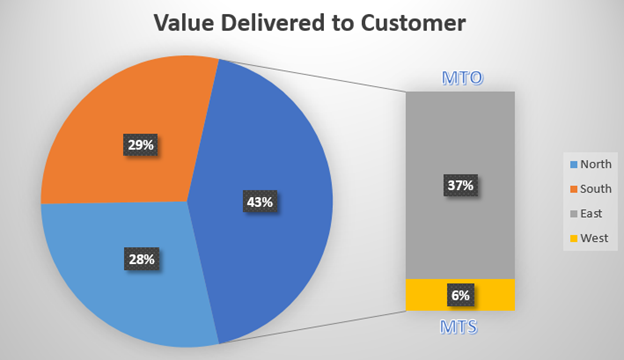6 min read
What Exactly is Digital Transformation?
…and does it really apply to me? Organizations often find themselves in the position of replacing or upgrading their Enterprise Resource...

Supply chain segmentation is a practice in the field of supply chain management that refers to the process of breaking down a company's entire supply chain into smaller, more manageable segments.
These segments are then analyzed to identify areas where improvements can be made in terms of efficiency, cost control, and overall performance. In recent years, this approach has become increasingly important in the context of enterprise resource planning (ERP) transformations, as companies look for ways to optimize their operations and achieve greater levels of success while introducing new technologies to streamline them.

Key Point:
However, you choose to segment your organization, the important part is to structure it in a manner that is specific to your business needs and clearly tells a story that helps drive decision-making and team alignment.
One of the primary benefits of supply chain segmentation is that it allows companies to identify areas where they can create the most value for their customers. By breaking down the supply chain into smaller segments, organizations can gain a better understanding of how each part of the process contributes to the overall value that the company provides to its customers.
This can help to identify areas where improvements can be made in terms of product design, manufacturing and delivery processes, customer service, and technology gaps among other things.
In the context of ERP transformations, supply chain segmentation can be particularly valuable because it allows companies to identify areas where the new system can be most beneficial. For example, if a company identifies that its supply chain is particularly inefficient in certain areas, it can use the ERP system to streamline those processes and make them more efficient.
Another key benefit of supply chain segmentation in the context of ERP transformations is that it can help companies to manage risk more effectively. By breaking down the supply chain into smaller segments, companies can identify areas where they are most vulnerable to risk, whether that risk comes from supply chain disruptions, regulatory changes, dated technology, offline solutions, and other factors.
This can help companies to develop more effective risk management strategies and ensure that they are better prepared to handle any challenges that may arise through people, process, and technology implementations.
Here are a few things to consider when segmenting your organization to get going:
In addition to these benefits, supply chain segmentation can also help companies to improve their overall performance by providing a more detailed view of their end-to-end operations. By breaking down the supply chain into smaller segments, organizations can gain a better understanding of how each part of the process contributes to the overall performance of the company.
This can help to identify areas where improvements can be made in terms of efficiency, cost control, and other key performance indicators. Overall, supply chain segmentation is an essential concept in the field of supply chain management, and it is becoming increasingly complimentary in the context of ERP transformations. This can help companies to create more value for their customers, manage risk more effectively, and improve their overall performance in the marketplace.
Supply chain segmentation is a critical concept in the field of supply chain management, and it is becoming more and more useful in the context of ERP transformations. The powerful insight learned during the segmentation process allows for a broader understanding and faster alignment of the key drivers in an organization which ERP technologies and solutions will ultimately streamline.
The relationship between both segmentation and ERP transformations is extremely powerful and complementing. Contacts us today to schedule a call that will help you better understand how we can incorporate segmentation into your ERP project to better utilize your supply chain.

6 min read
…and does it really apply to me? Organizations often find themselves in the position of replacing or upgrading their Enterprise Resource...

There has never been an era when business transformation was not critical from Adam Smith to Henry Ford to Bill Gates, but in today’s rapidly...

Moving to a digital ERP environment is hard. It takes effort and time, but the effort pays off. Typically, our blog posts are dedicated to...